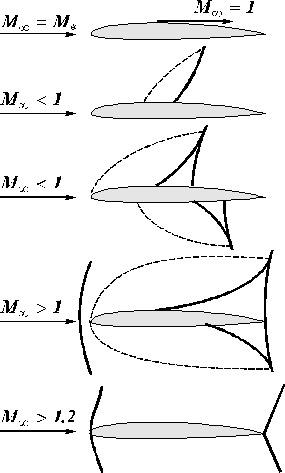
КАТЕГОРИИ:
Архитектура-(3434)Астрономия-(809)Биология-(7483)Биотехнологии-(1457)Военное дело-(14632)Высокие технологии-(1363)География-(913)Геология-(1438)Государство-(451)Демография-(1065)Дом-(47672)Журналистика и СМИ-(912)Изобретательство-(14524)Иностранные языки-(4268)Информатика-(17799)Искусство-(1338)История-(13644)Компьютеры-(11121)Косметика-(55)Кулинария-(373)Культура-(8427)Лингвистика-(374)Литература-(1642)Маркетинг-(23702)Математика-(16968)Машиностроение-(1700)Медицина-(12668)Менеджмент-(24684)Механика-(15423)Науковедение-(506)Образование-(11852)Охрана труда-(3308)Педагогика-(5571)Полиграфия-(1312)Политика-(7869)Право-(5454)Приборостроение-(1369)Программирование-(2801)Производство-(97182)Промышленность-(8706)Психология-(18388)Религия-(3217)Связь-(10668)Сельское хозяйство-(299)Социология-(6455)Спорт-(42831)Строительство-(4793)Торговля-(5050)Транспорт-(2929)Туризм-(1568)Физика-(3942)Философия-(17015)Финансы-(26596)Химия-(22929)Экология-(12095)Экономика-(9961)Электроника-(8441)Электротехника-(4623)Энергетика-(12629)Юриспруденция-(1492)Ядерная техника-(1748)
Wing in transonic range of speeds
 Fig. 6.18.
Fig. 6.18.
|
Speeds corresponded to Mach numbers ( ) are called transonic. All range can be divided on to: area of subsonic speeds (
) are called transonic. All range can be divided on to: area of subsonic speeds ( ), area of supersonic speeds (
), area of supersonic speeds ( ), flow mode with Mach numbers
), flow mode with Mach numbers  .
.
Features of the aerodynamic characteristics in subsonic part of transonic speeds are determined by existence of mixed flow including subsonic (outside of the wing) and supersonic (on the wing and near to it) flow areas. The forward border of supersonic flow area represents the so-called sound line, along which the transition from subsonic to supersonic flow is occurred. The flow remains subsonic outside of zones limited by the sound line. Fig. 6.18 shows the approximate borders of supersonic zones at various Mach numbers  . With increasing of Mach number
. With increasing of Mach number  the shock waves are originally formed on the upper surface and move to the trailing edge. Then the supersonic area is formed on the lower surface. The development of supersonic area on the airfoil lower surface proceeds more intensively, than on lower. The supersonic areas are finished by shock waves, which with increasing of numbers
the shock waves are originally formed on the upper surface and move to the trailing edge. Then the supersonic area is formed on the lower surface. The development of supersonic area on the airfoil lower surface proceeds more intensively, than on lower. The supersonic areas are finished by shock waves, which with increasing of numbers  displace back and enlarge the extent in the vertical direction. At
displace back and enlarge the extent in the vertical direction. At  a shock wave is theoretically distributed into infinity, at that there is a head shock wave before the wing also in infinity. The further increasing of
a shock wave is theoretically distributed into infinity, at that there is a head shock wave before the wing also in infinity. The further increasing of  caused movement of a head shock wave and shock wave on the wing surface downwards of the flow. The supersonic wing flow mode comes at values
caused movement of a head shock wave and shock wave on the wing surface downwards of the flow. The supersonic wing flow mode comes at values  , when the shock waves practically do not move any more, and reduce their angle of inclination with increasing of
, when the shock waves practically do not move any more, and reduce their angle of inclination with increasing of  .
.
The appearance of transonic parameter of similarity  , as a result of the non-linear theory, is characteristic for transonic area. Parameter
, as a result of the non-linear theory, is characteristic for transonic area. Parameter  influences onto changing of the aerodynamic characteristics so, that:
influences onto changing of the aerodynamic characteristics so, that:
 (Fig. 6.19);
(Fig. 6.19);
 (Fig. 6.20);
(Fig. 6.20);
 (Fig. 6.21).
(Fig. 6.21).
At  : the dimensionless parameters
: the dimensionless parameters  ,
,  ,
,  depend on
depend on  ,
,  , shape of the airfoil and
, shape of the airfoil and  . Let's remind, that the taper
. Let's remind, that the taper  continues to play a small role in changing of
continues to play a small role in changing of  and
and  , in some cases its influence can be neglected. However, the parameter
, in some cases its influence can be neglected. However, the parameter  plays an essential role for characteristic of aerodynamic center location, because it effects onto aerodynamic loading distribution wing spanwise.
plays an essential role for characteristic of aerodynamic center location, because it effects onto aerodynamic loading distribution wing spanwise.
For wings of arbitrary shape the influence of  is investigated a little. More detail research is carried out on rectangular wings with rhomboid airfoil (
is investigated a little. More detail research is carried out on rectangular wings with rhomboid airfoil ( ,
,  ,
,  or
or  ). it was proved, that for such wings at
). it was proved, that for such wings at  and
and  the value of
the value of  . It can be explained that at
. It can be explained that at  reduced aspect ratio
reduced aspect ratio  and we pass to the very low-aspect-ratio wing, for which
and we pass to the very low-aspect-ratio wing, for which  . If
. If  , then the theory of transonic flows for a rectangular wing gives
, then the theory of transonic flows for a rectangular wing gives  .
.
The analogous results are received for wave drag:  at
at  ,
,  at
at  .
.


Fig. 6.19. Dependence  on reduced aspect ratio on reduced aspect ratio 
| Fig. 6.20. Dependence  on reduced aspect ratio on reduced aspect ratio 
|
 Fig. 6.21. Dependence of the aerodynamic center location on
Fig. 6.21. Dependence of the aerodynamic center location on 
|
It is necessary to note, that in the latter case  , i.e. the wave drag grows with increasing of
, i.e. the wave drag grows with increasing of  , though not so fast as in the supersonic flow, in which
, though not so fast as in the supersonic flow, in which  . Change of the aerodynamic center location dependently on
. Change of the aerodynamic center location dependently on  is similar to changes of
is similar to changes of  (Fig. 6.21). The more
(Fig. 6.21). The more  , then aerodynamic center changing by Mach numbers
, then aerodynamic center changing by Mach numbers  behaves more irregularly: drastic displacement forward in subsonic range is probable with the subsequent displacement backward into position corresponded to supersonic speeds (displacement of aerodynamic center for a triangular wing at passage from
behaves more irregularly: drastic displacement forward in subsonic range is probable with the subsequent displacement backward into position corresponded to supersonic speeds (displacement of aerodynamic center for a triangular wing at passage from  to
to  is determined as
is determined as  ).
).
Main measures provided reduction of wing wave drag, improvement of its lifting properties and smooth change of aerodynamic center in supersonic range of speeds by Mach numbers  are: reduction of
are: reduction of  and
and  (decreasing of parameter value
(decreasing of parameter value  ) and increasing of
) and increasing of  .
.
6.6. Wing induced drag at  with taking into account local supersonic flows.
with taking into account local supersonic flows.
Let's consider the problem on the account of additional drag occurred at values of  and
and  , outgoing of critical values (the approximate method of the account is offered by S. I. Kuznetsov). This drag is necessary for taking into account at construction of the wing polar for specified
, outgoing of critical values (the approximate method of the account is offered by S. I. Kuznetsov). This drag is necessary for taking into account at construction of the wing polar for specified  ,
,  .
.
Let's assumethat the dependence of critical Mach number  on
on  , i.e.
, i.e.  or
or  . Let's construct this dependence in a plane of
. Let's construct this dependence in a plane of  ,
,  (Fig. 6.22).
(Fig. 6.22).
 Fig. 6.22
Fig. 6.22
 Fig. 6.23. Wing polar with the account of
Fig. 6.23. Wing polar with the account of 
|
Obviously, that all values of  and
and  , lying below the curve
, lying below the curve  fall into subsonic speeds area. However if at specified
fall into subsonic speeds area. However if at specified  will be
will be  , then the flow supersonic area closed by shock waves is formed on the wing. In this case there is an additional drag caused by lift
, then the flow supersonic area closed by shock waves is formed on the wing. In this case there is an additional drag caused by lift  (at
(at 
 ). If it assumes, that the growth of lift is not accompanied by growth of sucking force with increasing of angles of attack at
). If it assumes, that the growth of lift is not accompanied by growth of sucking force with increasing of angles of attack at  (that at presence of the broad supersonic area on a wing is permissible), then for a flat wing we shall have
(that at presence of the broad supersonic area on a wing is permissible), then for a flat wing we shall have  or
or  .
.
In addition adopting, that on transonic flow modes the proportion  is executed, then finally we receive
is executed, then finally we receive
 .
.
This parameter is added to induced drag, and thus we have:
 (6.22)
(6.22)
Wing polars take the form it shown in fig. 6.23.
Values of lift coefficients  corresponded to the beginning of wave crisis at
corresponded to the beginning of wave crisis at  ; i.e. the dependence
; i.e. the dependence  can be found from the formula (
can be found from the formula ( ):
):

where the factors  ,
,  ,
,  for a wing with a classical airfoil are equal
for a wing with a classical airfoil are equal  ,
,  ,
,  ; for a wing with a supercritical airfoil -
; for a wing with a supercritical airfoil -  ,
,  ,
,  .
.
|
|
Дата добавления: 2014-12-16; Просмотров: 408; Нарушение авторских прав?; Мы поможем в написании вашей работы!